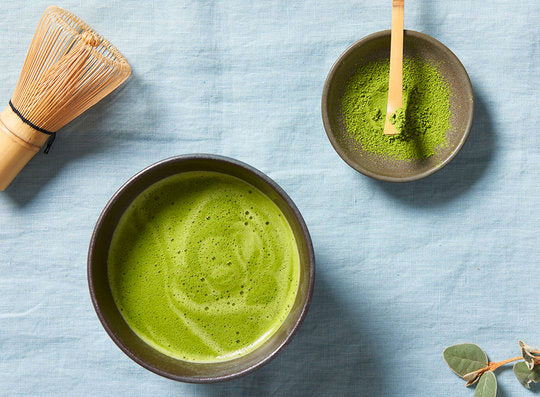my first time to.get matcha, i love this... not too bitter and it taste so good..
Good quality, fast delivery. Product was what I expected

Matcha, the vibrant powdered green tea originating from Japan, has gained immense popularity worldwide. But what does matcha taste like? In this article, we'll explore the taste of matcha and provide insights into the factors that influence its flavour profile. Whether you're a matcha enthusiast or new to this delightful beverage, understanding its taste can enhance your overall appreciation.
When it comes to the taste of matcha, several factors come into play. From the quality of the tea leaves to the brewing method, each element contributes to the final flavour. Let's explore these factors in more detail:
The quality of matcha powder greatly influences its taste. High-quality matcha is made from shade-grown tea leaves, which leads to increased chlorophyll and amino acid content. This cultivation process results in a smooth, rich, and slightly sweet flavour with a hint of umami. On the other hand, lower-quality matcha may have a more bitter taste and lack the complexity and depth found in premium varieties.
Just like grapes for wine, the environment in which matcha is grown plays a role in its taste. Factors such as soil composition, altitude, and climate contribute to the unique characteristics of matcha from different regions. Matcha from Uji, Nishio, and Kyoto, for example, are renowned for their distinct flavour profiles, reflecting the terroir of those areas.
The processing techniques employed during the production of matcha also impact its taste. After harvest, the leaves are steamed, dried, and deveined before being ground into a fine powder. The precision and care taken during these steps contribute to the overall flavor. Meticulous processing helps preserve the natural sweetness, umami, and delicate vegetal notes of matcha.
Matcha exhibits a unique and complex flavour profile that sets it apart from other teas. It can be described as:
The combination of these flavours creates a well-rounded and satisfying taste experience that matcha enthusiasts cherish.
To truly appreciate matcha's taste, it's important to be able to differentiate between good and bad matcha. Here are some indicators:
Good matcha is characterised by:
al note.
On the other hand, bad matcha may exhibit the following characteristics:
Sift: Begin by sifting 1 teaspoon of matcha powder into a bowl. This step helps remove any clumps and ensures a smooth and consistent texture.
Add Water: Pour a small amount of hot water (around 2 ounces) into the bowl of matcha powder.
Whisk: Using a bamboo whisk (chasen), vigorously whisk the matcha and water in a "W" or "M" motion. This whisking technique helps create a frothy layer on top and ensures proper incorporation of the powder.
Enjoy: Once the matcha is whisked to a smooth consistency and a frothy layer forms, your traditional matcha tea is ready to be enjoyed.
Traditional matcha tea preparation allows the flavours to bloom and ensures a velvety, creamy texture that is characteristic of a well-made matcha.
Matcha lattes have become a popular way to enjoy matcha, combining its unique taste with the smoothness of milk. Here's a simple recipe to prepare a delicious matcha latte:
Despite matcha's popularity, there are instances where it may taste less than ideal. Here are a few reasons why matcha can taste bad:
Understanding these factors can help you identify and rectify any issues when enjoying matcha.
Q: What does matcha taste like?
Q: How can I tell if matcha is of good quality?
Q: Why does matcha sometimes taste bitter?
Q: Can matcha be enjoyed without sweeteners?
Q: Can I make matcha latte with plant-based milk?
Q: How can I prevent clumps when whisking matcha?
Q: Does matcha taste better hot or cold? This is up to personal preference, most people drink matcha hot as a tea with water